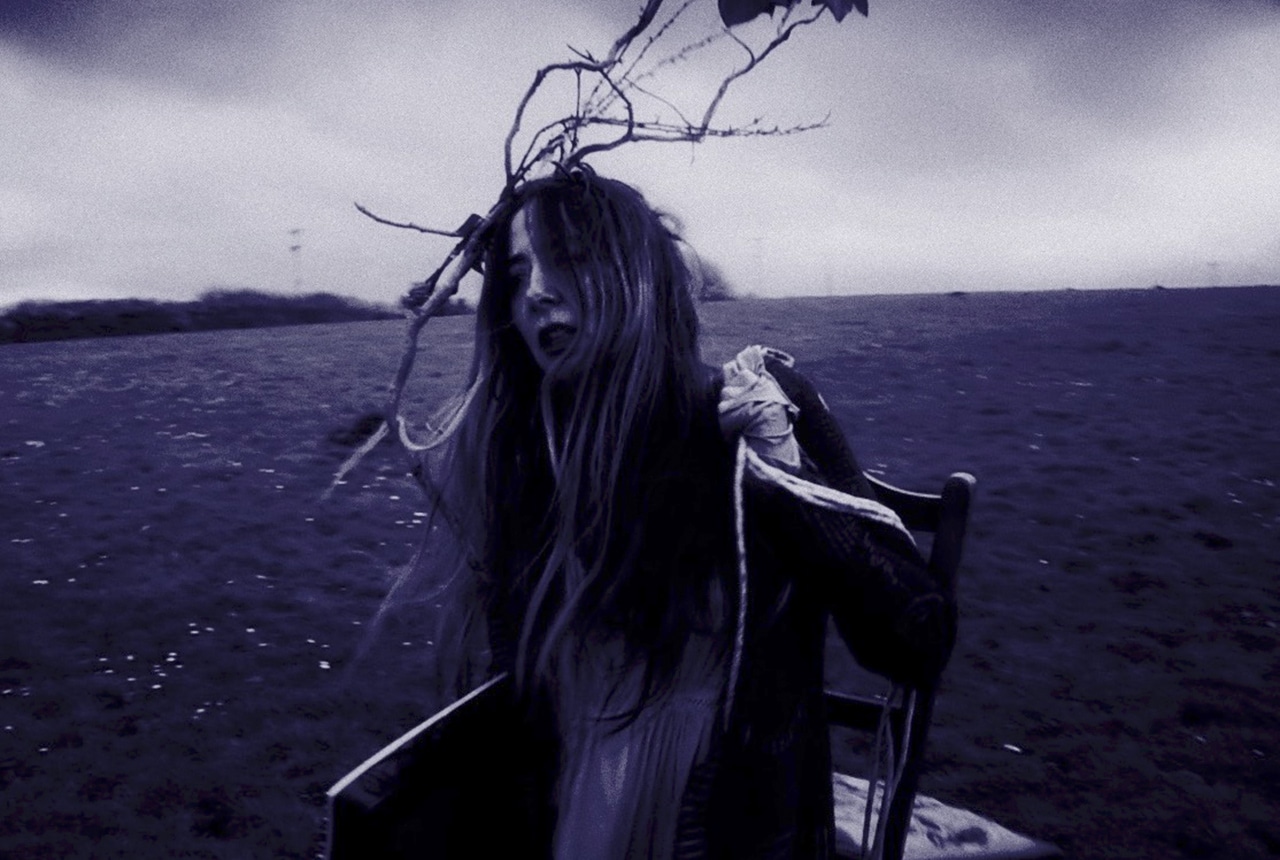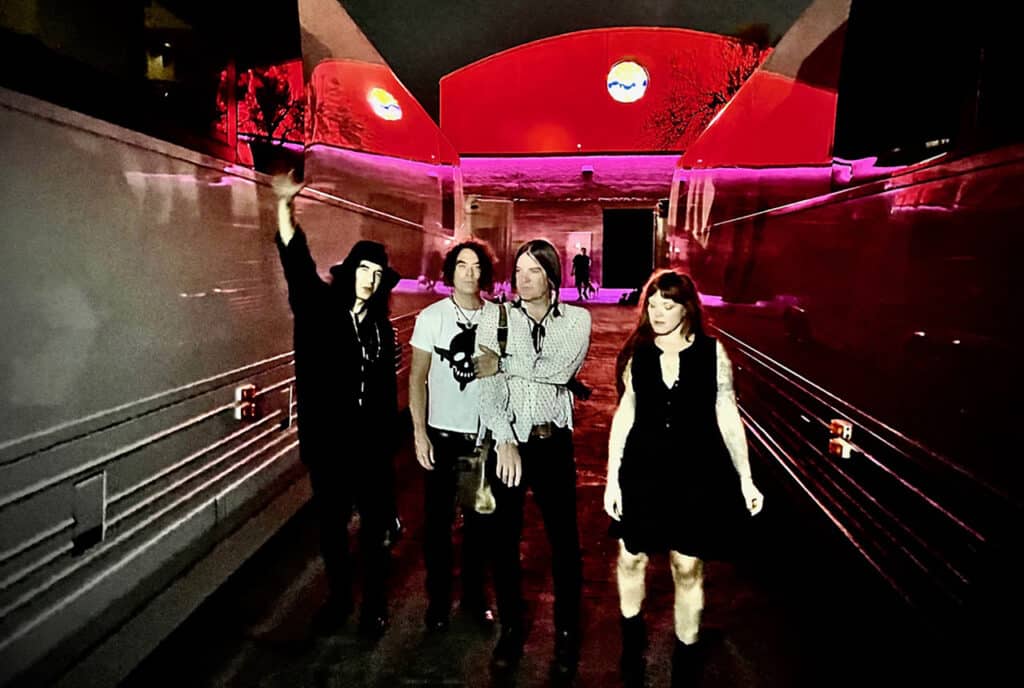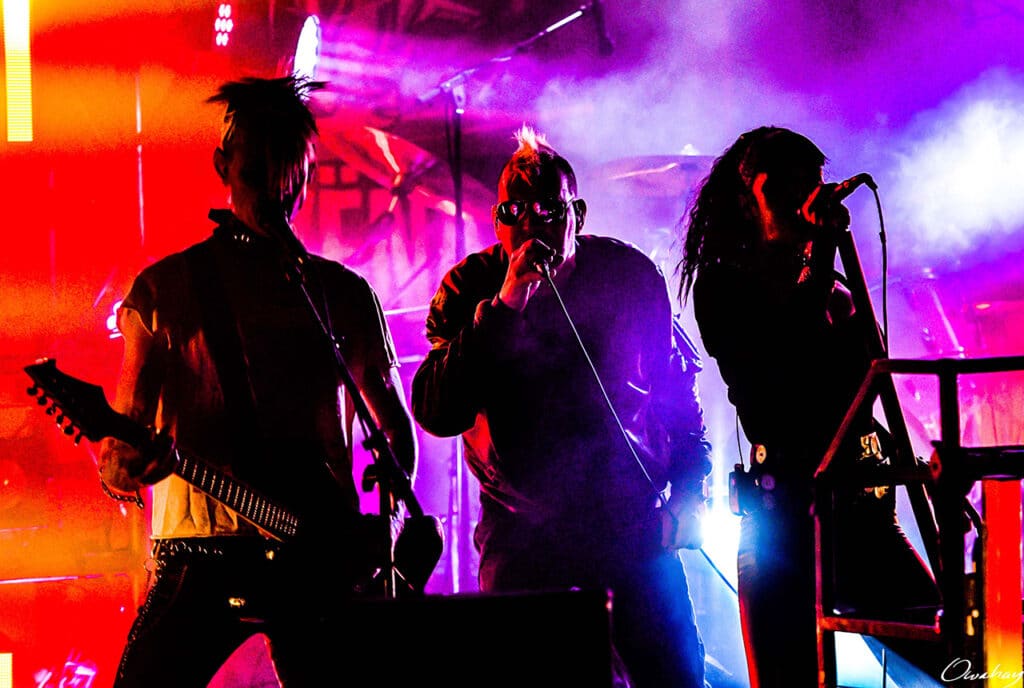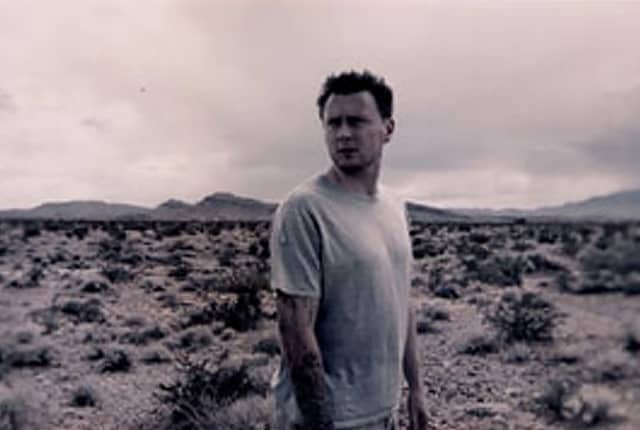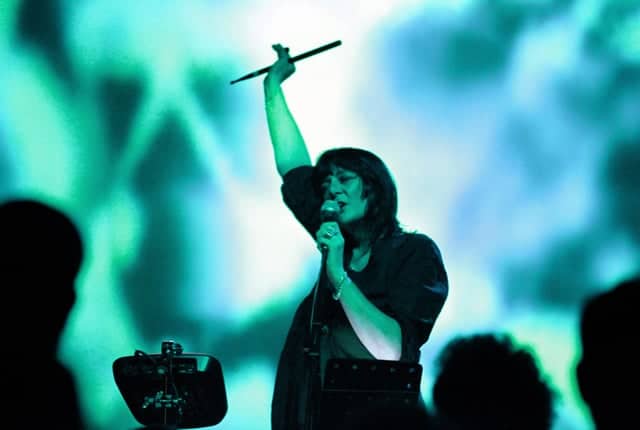With liar, flower, former Daisy Chainsaw frontperson KatieJane Garside builds upon the work of her previous project, Ruby Throat, but re-introduces some of the noise and abrasiveness of her earlier projects. Once again a collaboration with multi-instrumentalist Chris Whittingham, liar, flower recently released an extremely varied debut album, Geiger Counter. While some of the songs maintain the acoustic quietness of Ruby Throat, others bring in driving drums, aggressive vocals, and distortion. But it all comes together into a unique, cohesive sound.
Daisy Chainsaw was best known for their 1992 hit “Love Your Money.” Garside went on to form Queenadreena with Daisy Chainsaw guitarist Crispin Gray, and also worked with Test Department, lalleshwari, and Hector Zazou’s Corps Electronique. As Ruby Throat, Garside and Whittingham released four albums and an EP between 2007 and 2017, as well as their 2018 compilations Stone Dress and Liar, Flower.
How did you come to shift from Ruby Throat to liar, flower?
Katiejane Garside: We did a final Ruby Throat record, which ultimately ended up being a kind of “best of” Ruby Throat because we’ve worked for so many years completely DIY, putting music out for nearest and dearest people. We decided because we had a lot of material to do a Ruby Throat “best of.” Actually, a better way of saying it is “introducing” Ruby Throat because One Little Indian had said they would like to do that. I suddenly panicked after cutting that record and went, “Oh, we’ve missed some songs,” and I put together a CD of an extra five songs, which are called “liar, flower.”
That EP was called liar, flower, and then that name just became louder and louder to me. I found it in a book that I’d written, and it just became louder and louder and more dominant. That also allowed us to make more noise than we’d made for many, many years, including drums and very loud improvisations. And that became liar, flower. It became a very clear distinction for me, that Ruby Throat had morphed into liar, flower. That’s how I take my direction, from that impulse instinct.
How did the overall creative process compare to working as Ruby Throat?
Katiejane Garside: One huge difference is that we’re on land for the first time in many years. We lived on a boat, so we suddenly had a bit of space, which allowed us to make some noise. I hadn’t made noise in that way since my band before Ruby Throat, which was Queenadreena. I’d sort of annexed that voice. I’d had enough, you know, and I’d sent that voice on holiday for a decade. Anyway, it became very apparent that the voice wanted a voice again. So, I allowed that voice, but we afforded by space, we were able to really improvise and make a noise.
That’s what became songs like ”My Brain Is Lit Like an Airport” and “Mud Stars,” among some other ones. They two are actual, real improvisations that have been slightly cut up by Chris, my partner. He’s an incredible editor and arranger, and he found the song within the improvisation. But we’ve both been writing songs for many decades. So, you have a kind of song structure unconsciously on tap, I think. It can come up and out within an improvisation.
Having made a variety of music, some noise, some quieter, how do you feel that the style affects your approach to lyrics and vocals?
Katiejane Garside: I’ve always just thought of myself as a singer, but I started playing the autoharp. I’ve had this instrument for many years, but I never played it in this. I’d say I suddenly had some autonomy. The autoharp spoke to me, and I was able actually to write some songs on my own. I think circumstance very much dictates what is. I very much respond to the environment as it presents itself, whatever band it is. In Queenadreena, it is very much mirroring the noise, the noise of guitars and bass and drums. A boat will dictate a certain way of being and a certain way of music to arrive. And this small house in the middle of isolated Cornish coastal countryside dictates another sound. This record has been written in the last year in this 250-year-old-plus cottage with a well outside.
It’s an immersive process. I’m big on meditation. I’ve meditated since I was 18, not very consistently, but I’ve meditated very intently over the last 15 or 16 months. I was writing, so I would meditate for an hour and then while the brain still doesn’t know who it is, when I come out of the meditation, I write a stream of consciousness. I had pages and pages and pages of streams of consciousness. I try to leave them for at least three months so I’m thoroughly at a distance from them. And then I have pages and pages spread out all over the floor, and we improvise. I was gonna say I cherry pick, but it’s more like the words pick me from the page, and they write me and they jump across all different pages and there is the song. I’m doing that on my own, with autoharp or an improvization with Chris with the guitars and drum loop. That’s how it’s done; that’s all I know. There’s no actual concept other than to write from what is called the unconscious. But I’m not sure I really go with that definition, but that’s how I would explain it. There’s no plan other than that. And then this is what we have, and then we have to somehow fit it all together and send it off on its way into the world.
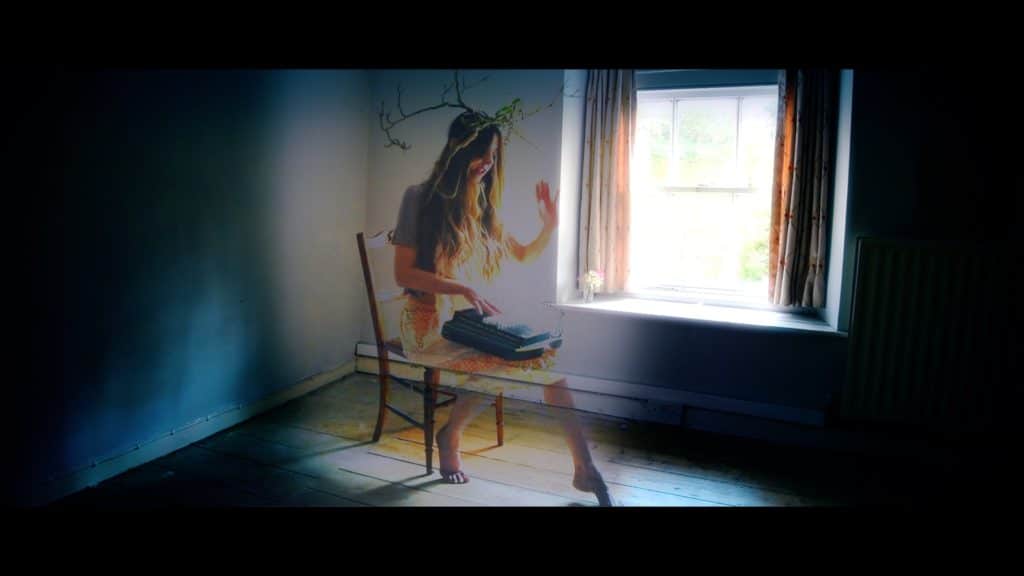
You said there was no plan, so I’m wondering if any songs ended up going in particularly unexpected directions as they evolved into their final forms?
Katiejane Garside: On the song that’s called, “Even Though the Darkest Clouds”– I do some gardening, and I used to sing that song to myself, and Chris always like it. That was a smash up right at the end. Actually, to answer your question, that song didn’t have “even though the dark clouds are in the sky” on it; it was a song ready to be abandoned. It was in pieces and didn’t work. But I wanted it, because it was the first sort of guitar work that Chris had done in that way; that was where we started. That was the beginning in the previous December, I think, when we just really started. We knew that we were beginning a record. And it was the one that we couldn’t finish; we couldn’t find the way. And we had one last go at it. I’d been making these tapes, cassette tapes of my autoharp songs. They are sort of one-off performances, cassette tapes that I was sending to people who wanted to buy them. He was copying the tapes, and there was that song. I’d sung it just while I was making those cassette tapes just for fun in a break of my autoharp songs. He took that from the cassette tape and smashed it onto that song. So that was one of those turnarounds where you throw all the cards in the air and see how they land and smash them together. So that one nearly didn’t make it. That was one of those moments … all of it’s totally unpredictable, isn’t it? You can’t predict what you’re doing or how it’s going to go, how it’s going to sound, or how it’s going to be received or how you feel about it yourself. Other than that, you have a gut instinct on it, and our job is to just show up and stay out of its way as much as we can and move swiftly on, I would say.
Do you plan on doing live performances with this material?
Katiejane Garside: I’d love to do it. We’ll see how it goes. Where the bodies can stand in rooms together, I would love to. We’ll find a way. I just did some autoharp songs, which I recorded for somebody who wanted it for a website. That obviously is easy to do. But to do the making big noise songs, which we have a deep need to do, we’ll figure it out somehow.
You’re also a visual artist. Do you think feel there is an overlap between that and your music?
Katiejane Garside: I’ve thought about this quite deeply, actually, about the word “artist.” I’ve always found that it really doesn’t sit comfortably with me. I came up with the phrase “impulsive chancer,” and that does sit comfortably with me. I am impulsive in what I do, and I am unstudied. That’s why I feel the word “artist” is not really relevant. I don’t feel worthy of that word, I have to say. But “impulsive chancer” I can sit with. I can pick up a pen, I can draw, I can make songs on the autoharp, and I can stare into the face of something that’s playing to me and reflect it back. I’m always incredibly shocked that anyone pays it any heed, quite honestly. I’m incredibly shocked and grateful. How they cross-fertilize? I mean, I am just this thing, this impulsive chancer who gets to play in the sandpit and has enough arrogance to allow myself to put it out into the world for other people and to take a view on. I’m just a kid messing around with a paint pot, in everything I do.
Geiger Counter can be purchased here : https://indian.co.uk/shop/ruby-throat/liar-flower-geiger-counter/
For more info, visit : http://sleeplikewolves.katiejanegarside.com/
